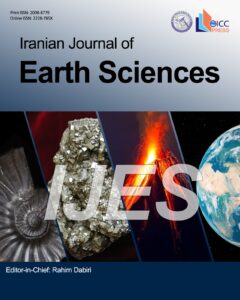Biostratigraphy and paleoecology of the Cenomanian – Coniacian succession in the Chenareh Anticline, West of Iran
Authors
-
Iraj Maghfouri Moghaddam
*
 1
1
- Mehdi Farahpour 1
- Ghamar Naz Darabi 1
- Mostafa Dolatsha 1
- Parvin Hassan Zaded 1
Abstract
In this study, a foraminiferal biozonation scheme for the Late Cenomanian – Coniacian deposits for the Lorestan basin, is proposed. Five successive biozones are recognized within the Sarvak, Surgah and Ilam formations, which in stratigraphic arrangement are Nezzazata – Alveolinids Assemblage Zone (Late Cenomanian- Early Turonian), Helvetoglobotruncana helvetica Total Rang Zone (Early- Middle Turonian), Marginotruncana schneegansi partial Range Zone (late Turonian), Diacarinella concavata Interval Zone (Coniacian), and Diacarinella asymetrica Total Zone (Santonian). Assemblages of Turonian planktonic foraminifera followed assemblages of the late- Cenomanian- early Turonian benthic foraminifera. The paleoecology of the larger benthic foraminifera suggests very shallow water (10 to 50m water depth) and oligotrophic conditions. A sharp decrease in the diversity of foraminifera, inferring an period with dysoxic situation at the sea bottom that was found in the upper part of the Sarvak Formation. The occurrence of planktonic foraminifera associated with opportunistic taxa such as the hemipelagic calcisphaerulids at early Turonian refers to a bioevent that appears to equate with the Bonarelli Cenomanian-Turonian Oceanic Anoxic Event. Commonly, the planktonic foraminiferal morphotype suggests that the depth of the basin was often more than 200 m in the Turonian to late Santonian. In the middle Santonian, biserials and non-keeled forms of the shallow water fauna (0 to 50 m) dominate foraminiferal assemblages.



